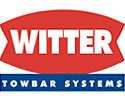The 27-year-old F1 motor racer from Hertfordshire claimed pole
position around the Albert Park street circuit in Melbourne this morning
(Saturday).
Hamilton’s Vodafone McLaren Mercedes colleague
Jenson Button was second quickest in Q3 to complete the team’s first
front row lock-out since Hungary 2008.
While there were
celebrations in the McLaren garage, there were glum faces in the Red
Bull paddock after double world champion Sebastian Vettel could only
qualify sixth behind Mark Webber, who will start from the third row in
fifth spot.
Things were even worse for Ferrari, with both their
drivers, Fernando Alonso and Felipe Massa, failing to reach the top 10
shootout in qualifying.
Following the capitulation of both the
Red Bull and the Ferrari cars, William Hill make Stevenage-born Hamilton
the 11/10 favourite to win the Australian Grand Prix, with his
team-mate Button second in the betting at 11/4.
Vettel has gone
from being the 11/8 favourite for the race to 8/1, while Michael
Schumacher, fourth on the grid, could get his first podium finish since
returning to F1.
The German Mercedes driver is 12/1 for first place and 2/1 for a spot in the top three.
Romain Grosjean qualified third for Lotus ahead of Schumacher.
Hamilton is 8/13 to beat his team-mate, while Button is 6/5 to finish ahead of Lewis.
If Vettel’s drift in the race odds has been alarming, then his drift in the Drivers’ Championship has been more so.
At
one point 5/6 before the season had even started, Vettel is now 9/4
second favourite, with Hamilton 2/1 and Button, in from 8/1 to 3/1 third
favourite.
“Sebastian Vettel has been so well fancied and that
is highlighted by the fact that he was odds on before a wheel had been
turned in anger.
Lewis Hamilton in Melbourne [Picture: Vodafone McLaren Mercedes]
“That
the Red Bulls were so far off the pace indicates that this season could
be the closest yet,” said Hill’s spokesman Joe Crilly.
The poor
Australian GP qualifying for Red Bull has also seen them overtaken for
the Constructors’ Championship, with McLaren 8/11 and Red Bull 2/1.
Mercedes GP are in third for the first time at 5/1 with Ferrari out to 20/1.
Follow us on Facebook for all the F1 updates















![Lewis Hamilton in Melbourne [Picture: Vodafone McLaren Mercedes]](http://www.whtimes.co.uk/polopoly_fs/01f1gpaustralia2012_2597_1_1241268%21image/4292856273.jpg_gen/derivatives/landscape_225/4292856273.jpg)





